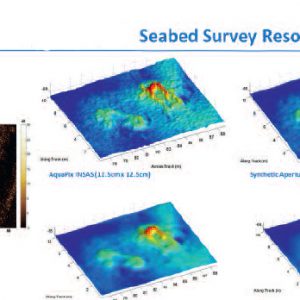The biggest obstacle to tapping the recoverable oil and gas reserves in the Canadian Arctic – estimated at CA$1 trillion (GB£554 billion) – is the lack of reliable hydrographic charts, according to Karl Kenny, president and CEO of Kraken Sonar Systems in St John’s, Newfoundland, Canada.
“Global warming is having an impact,” he said. “The ice is receding. Soon enough, there will be feasible traffic up there in significant amounts, but we haven’t got it mapped.”
In mid-November 2013, Kenny gave a presentation at the Maritime and Arctic Security Conference in St John’s on ‘Canadian Imperatives for Charting the Arctic Marine Corridor’. He pointed out that Canadians are no strangers to drilling in the Arctic, having drilled 176 wells there between 1961 and 1986, at which point OPEC crude dropped to CA$9.85 (GB£5.45) per barrel. Fresh out of the Canadian Navy in 1981, Kenny began working as a radio operator with the Panarctic Oils, Canada, High Arctic team.
Pointing to both the Canadian and Russian Arctic, he highlighted the dramatic variance in economic activity and investment: 0.55% of GDP and CA$10 billion (GB£5.54 billion) in Canada, compared to 20% of GDP and CA$400 billion (GB£222 billion) in Russia. With Canada trailing in all categories, he cited 61 deepwater ports compared to 421, one search and rescue station compared to 16, and six icebreakers compared to more than 40. “Russia is now building the world’s Click here to read the rest of the article.

